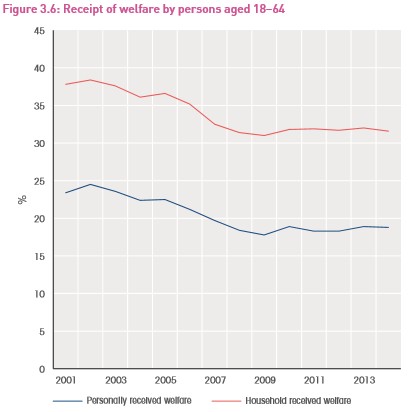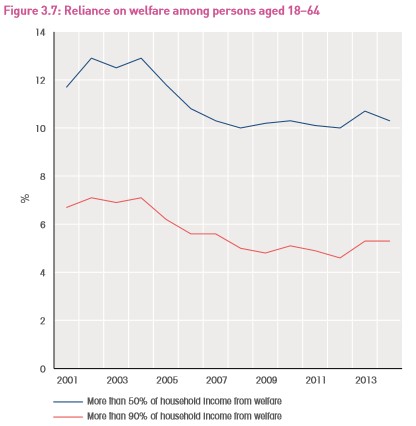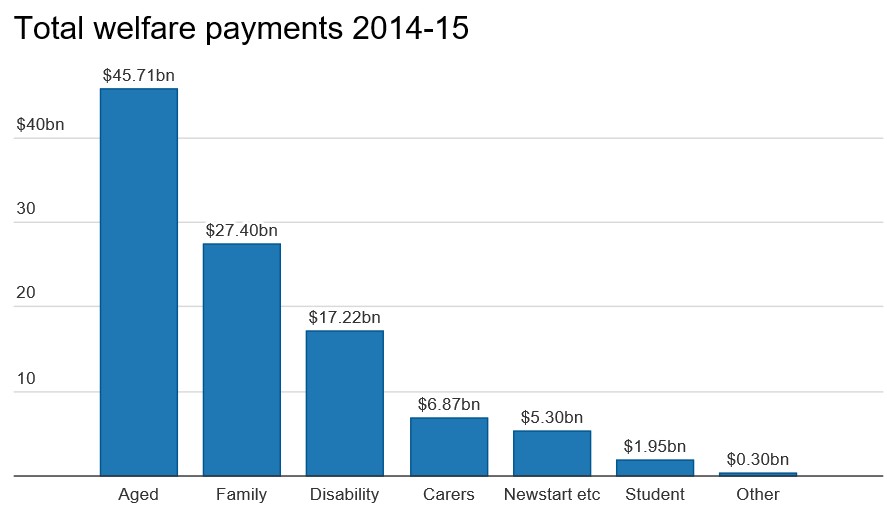The Guardian’s Greg Jericho has penned another good piece questioning the new found obsession with welfare spending by the Turnbull Government:
Conservative governments often struggle with welfare, given their default position that it is a “problem” that requires cutting. They aren’t helped by friendly media outlets so desperate to push the idea of those on welfare as bludgers that they will rush to paint youth as such on their front pages, regardless of the facts.
The struggle is compounded by the findings of reports, such as that released this week, which show the biggest driver of welfare spending is the age pension, and that those who remain on welfare for lengthy periods are in small and very specific groups…
Joe Hockey tried this approach last year in his much criticised Intergenerational Report. That report actually predicted all welfare payments would decrease by 2055 as a proportion of GDP except for the age pension and the carer payment – both of which are linked to our ageing population…
Fifteen years ago the base level of Newstart was equivalent to being on the poverty line; now it is equal to being 30% below that line…
Not surprisingly, what keeps people on Newstart is not the level of Newstart, but whether or not there are jobs available…
It is unlikely the government will change its narrative, but you would think at some point it might realise that if you are going to get people to agree with your policies, perhaps basing them on reality might be a good way to start.
Too right. The recently released HILDA survey showed that welfare reliance for those at working age age has actually fallen over the past decade:


Analysis from the Parliamentary Library and data from NATSEM has drawn similar conclusions (see here).
If the Government truly wants to reduce welfare spending, it should focus on the biggest and fastest growing component – the Aged Pension ($45.7 billion currently rising by $2 billion per year to $52 billion by 2019-20) – which dwarfs the other forms of welfare expenditure (see below chart)?

The Aged Pension also happens to be the most poorly targeted form of welfare expenditure precisely because it largely excludes most people’s biggest asset – their principal place of residence – from the assets test to qualify for the pension. Accordingly, Aged Pension expenditure has rocketed at the same time as older generation’s wealth has ballooned, which is a perverse outcome (see here for analysis).
A little bit of honesty on this issue from the Coalition wouldn’t go astray.

